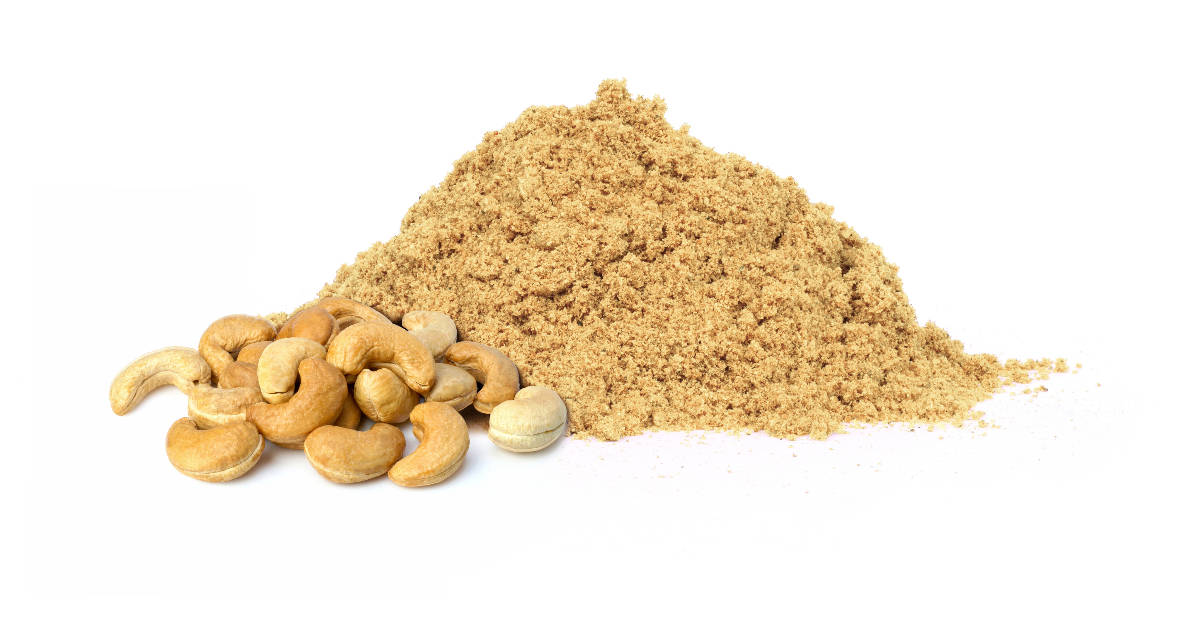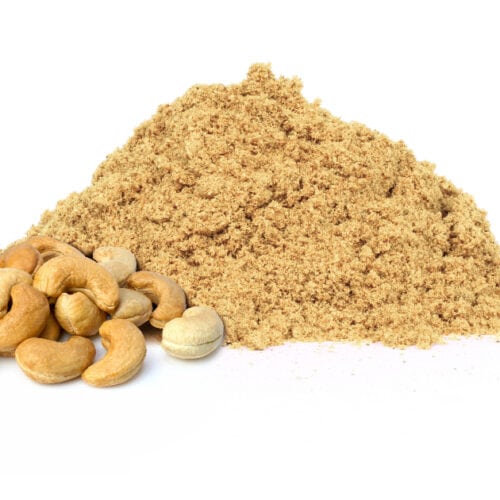Making your own cashew powder at home is simple and rewarding. With just a few ingredients and steps, you can create a tasty, nutritious flour substitute to use in various recipes.

Cashew powder, also known as cashew flour, is made from ground cashews. It has a sweet, nutty flavor and can be used as a substitute for regular flour in many recipes.
How to Make Cashew Powder

Homemade Cashew Powder - Recipe
Ingredients
- 1 cup raw cashews
- 1-2 tsp sugar or palm sugar (optional - helps achieve a finer powder)
Instructions
- Add the raw cashews to a high-powered blender, dry blender pitcher, or food processor. Make sure there is no water or oil inside.
- Blend the cashews on high speed until they become a fine powder. Stop and scrape down the sides as needed. Be careful not to overblend or the nuts will turn into cashew butter.
- Add the sugar if desired and blend again to further grind the powder. The sugar granules help break down the cashews.
- Sift the cashew powder through a fine mesh sieve. Return any large bits back to the blender to process again until powdered.
- Store the cashew powder in an airtight container in the refrigerator for a few months or the freezer for up to a year.
And that's it - homemade cashew flour made easy! Much cheaper and fresher than buying it pre-made.
Key Takeaway: Making your own cashew powder at home only takes 5 basic ingredients and steps. Be careful not to overblend or you'll end up with cashew butter instead of flour.
Substituting Cashew Powder for Flour
Cashew powder can be used as a substitute for regular flour in many recipes. Here are some tips:
- For baked goods, replace up to 25% of the all-purpose flour with cashew powder. More than that can result in a too oily, dense texture.
- Since cashew powder doesn't contain gluten, expect baked goods to be denser and not rise as much. Add extra leaveners like baking powder.
- Adjust the liquids - cashew powder soaks up more moisture than regular flour. Reduce liquids or add an extra egg or two to help bind.
- Works well in cookies, bars, quick breads, muffins, pancakes, and more. Also great for coating meats or dredging vegetables.
- For savory dishes, use cashew powder as a thickener just like you would regular flour.
When experimenting, start with small test batches at first to get the substitution ratios right. And don't be afraid to get creative with cashew powder!
Cashew Powder Recipes
From sweet to savory, there are endless ways to enjoy homemade cashew powder:
Sweet Recipes
- Cashew butter cookies
- Breakfast cookies
- No-bake energy balls
- Granola bars
- Banana nut muffins
- Pancakes and waffles
- Fruit crumbles
Savory Recipes
- Chicken or fish coating
- Veggie fritters
- Crispy nuts or seeds
- Thicken soups, gravies, sauces
- Mixed into pasta, rice, quinoa, etc.
For baked goods especially, be sure to seek out recipes developed specifically for cashew flour. As noted above, adjusting traditional flour recipes can take some tweaking to get the right texture.
Key Takeaway: Cashew powder works great in place of regular flour in both sweet and savory recipes. For baked goods, look for recipes developed for cashew flour to ensure best results.
Storing Cashew Powder
Properly storing your homemade or store-bought cashew flour maintains freshness and prevents spoilage. Here are some cashew powder storage tips:
- Store at room temperature in an airtight container for 2-3 months
- For longer shelf life, refrigerate for up to 6 months
- Can also be frozen for up to a year
- If refrigerated/frozen, bring to room temp before using
- Make sure container has low moisture and humidity
- Use clean, dry utensils to scoop out only what you need then reseal
Checking for signs your cashew flour has gone bad:
- Noticeable rancid smell
- Change to a darker color
- Presence of mold
- Loss of fresh cashew taste and aroma
Do not consume cashew flour if any signs of spoilage. Be vigilant about proper storage methods.
Key Takeaway: To maximize freshness, store cashew powder in an airtight container in a cool, dry place. Refrigerate or freeze for longer shelf life up to a year.
FAQs
Is cashew powder gluten-free?
Yes, cashews do not contain gluten so cashew powder is considered gluten-free. This makes it a good flour option for anyone following a gluten-free diet.
What is the difference between cashew powder and almond flour?
While both are made from ground nuts, cashew powder is made from the seed of a cashew apple while almond flour comes from the nut of an almond tree. They have slightly different nutritional profiles but can often be used interchangeably.
Can you use cashew powder in place of all-purpose flour?
Yes, you can substitute cashew powder for up to 25% of the all-purpose flour in recipes. Any more may impact the texture. Be sure to tweak recipes to account for differences in binding, moisture, etc.
Is cashew powder Keto friendly?
Definitely! Since cashew powder is low carb and high fat, it fits great into a ketogenic diet. It's a good replacement for regular flour which is higher in carbohydrates.
Is cashew powder the same as cashew nut powder?
Yes, cashew powder and cashew nut powder are the same thing. The terms are used interchangeably. Both refer to a fine flour made by grinding cashew nuts.
Is cashew powder high carb?
No, compared to regular flour, cashew powder is relatively low in net carbs. With 10g carbs and 5g fiber per 1/4 cup serving, it fits into many low carb, keto, and paleo diets.
Conclusion
Homemade cashew powder is a versatile and healthy alternative to regular flour. With its sweet nutty taste and rich nutritional profile, cashew powder makes for an easy flour substitute in both sweet recipes and savory dishes.
While buying pre-made cashew flour is simple enough, making your own at home gives you control over the freshness and quality. And it only requires some basic ingredients and a few processing steps.

